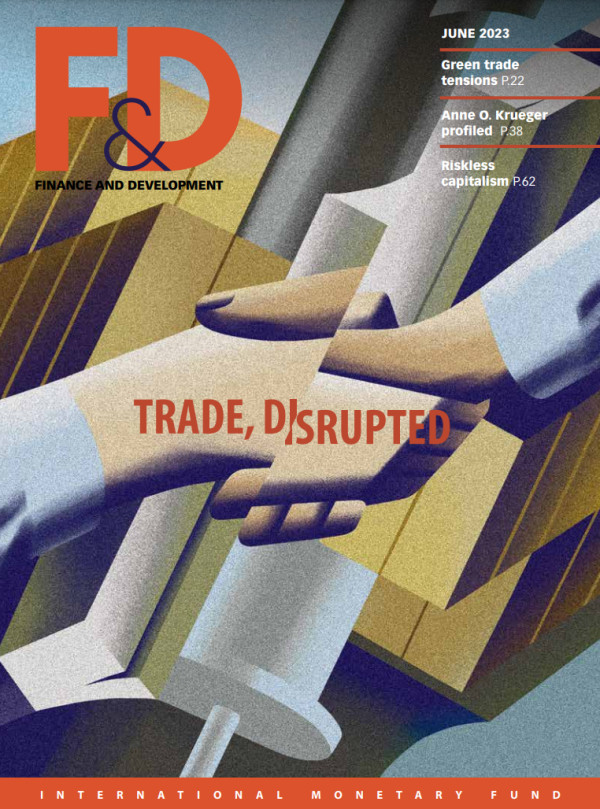Eastern Europe’s Exodus
In Europe’s newest states, emigration compounds the problem of aging populations
Chris Topalov’s family has navigated the choppy waters of Europe’s embattled economies for decades. His parents left their homeland of Bulgaria to escape financial chaos in 1997; chaos caught up with them in Greece, where Chris was born. In 2016 the family left for better prospects in the United States.
The odyssey has prompted Chris to study economics to make some sense of Europe’s travails when he heads to college this year. But though he feels Bulgarian, it’s an open question whether he would ever move back.
That’s a problem for Bulgaria and the other, mostly former socialist countries of central, eastern, and southeastern Europe. Nine of the ten fastest-shrinking countries in the world are in eastern Europe, according to United Nations projections, with consequences for economic growth and a chance at the European prosperity that the fall of the communism promised.
Life expectancy has risen to 74 years from 67 in 1995, and GDP per capita has more than doubled. But longer lives, smaller families, and the ease of emigration have combined to exert demographic pressures that will increasingly weigh on economic growth, undermining the gains achieved since the fall of the Berlin Wall. Countries in the region are at risk of getting old before they get rich, IMF Deputy Managing Director Tao Zhang warned last year.
It is no surprise, then, that many from eastern European countries are seeking opportunities elsewhere. Membership in the European Union has made it easier to boost trade and foreign investment and has brought with it an exceptional pace of per capita income convergence to western European levels. But it has also kept up the pressure on the exodus of young, skilled professionals that began with the fall of communism in 1989.
Between 1995 and 2017, central, eastern, and southeastern European (CESEE) countries lost about 7 percent of their workforce, mostly young and educated workers, like Topalov’s parents. The United Nations expects that the population of the region will decline by 12 percent by 2050 as a result of aging and migration. The workforce will fall by a quarter in the same period.
“Population aging concerns more than just public pensions,” says Alasdair Scott, an IMF economist who coauthored a recent study of demographics in central and eastern Europe. “It has serious implications for health care and social services and profound implications more generally for growth and the aspirations of these countries to converge to western European incomes.”
The research indicates that a shrinking labor supply and lower productivity of older workers, together with greater pressure on the public purse for health care and pensions, could cost these countries about 1 percent of GDP per year for the next 30 years. That will put the brakes on incomes rising to western European levels: per capita GDP for these countries will still be only 60 percent of western European levels in 2050. Although that represents an increase from 52 percent now, without the demographic challenge, it could have been 74 percent.
Some governments in the region are betting on financial incentives to raise birth rates. In Hungary, where the government has been vocal in its opposition to immigration, women with more than four children have been exempted from income tax, and couples requiring fertility treatment will receive it free.
But fertility rates aren’t the big story, says Scott. What makes the demographics in the region so dramatic is the extent of the difference in emigration and mortality rates, which are much higher than those in western Europe.
“Financial incentives in other countries don’t seem to have had much effect on birth rates. But even if they could, immmediately, it would be two decades before a difference were seen in the working-age population—whereas the demographic pressures are here and now,” he said.
The region needs quick footwork. More women need to be brought into the workforce and older workers convinced to keep working and trained so that they can do so. And CESEE countries need to deter people from leaving. That would entail strengthening institutions and improving the overall economic environment and investment climate.
“The world is a highly competitive place,” says Maria Topalova, Chris’s mother, a journalist. If countries like Bulgaria “want to keep young, hard-working, smart people, they have to offer things in return.”
Globally, 54 percent of companies say they struggle to find qualified people for vacancies, the highest rate in a decade, according to Manpower Group’s Talent Shortage survey for 2019. At the Bucharest headquarters of Dacia, the iconic car created under communism and now owned by Groupe Renault, employees get massages and use of a gym and can telework two days a week as part of the company’s campaign to attract and keep qualified people, according to Managing Director Christophe Dridi. “We need to provide those things in order to persuade them to stay with us,” he told a conference last year.
Otherwise, countries need to look at inward migration. Fast-food giant McDonald’s imported 30 workers from Sri Lanka to fill the labor shortage in three of its Bucharest stores, part of a two-year pilot project. The company serves about 230,000 customers per day in its 84 restaurants in Romania. It opened four new outlets in 2019 and plans to open another eight this year.
Much has been said about automation: in principle, it could free workers for more valuable activities, such as spending more time teaching than on administrative work. But it could also push out workers with lower skill levels. The key, ultimately, is education—not just before adulthood, but throughout working lives.
In Bulgaria, Rails Girls Sofia has been singled out as an example of building skill sets for the future. The organization has trained about 1,000 women in web programming since 2013.
Maria Topalova agrees that Bulgaria has come a long way from the country she left when it was on the verge of economic collapse, with unstable institutions that drove her to that decision. The country’s institutions are improving, something the IMF research suggests can draw skilled migrants back to the country and stanch the brain drain. However, more needs to be done to dissuade a new generation from leaving.
“Now Bulgaria is a member of the EU and NATO, it has a stable economy, its macroeconomic indicators are excellent, it is a functioning democracy,” she says. But “if you want to fly in space or to find a cure for cancer, you go to countries that have already found ways to fund this research.”
PHOTO: ISTOCK / BORCHEE
Opinions expressed in articles and other materials are those of the authors; they do not necessarily reflect IMF policy.









